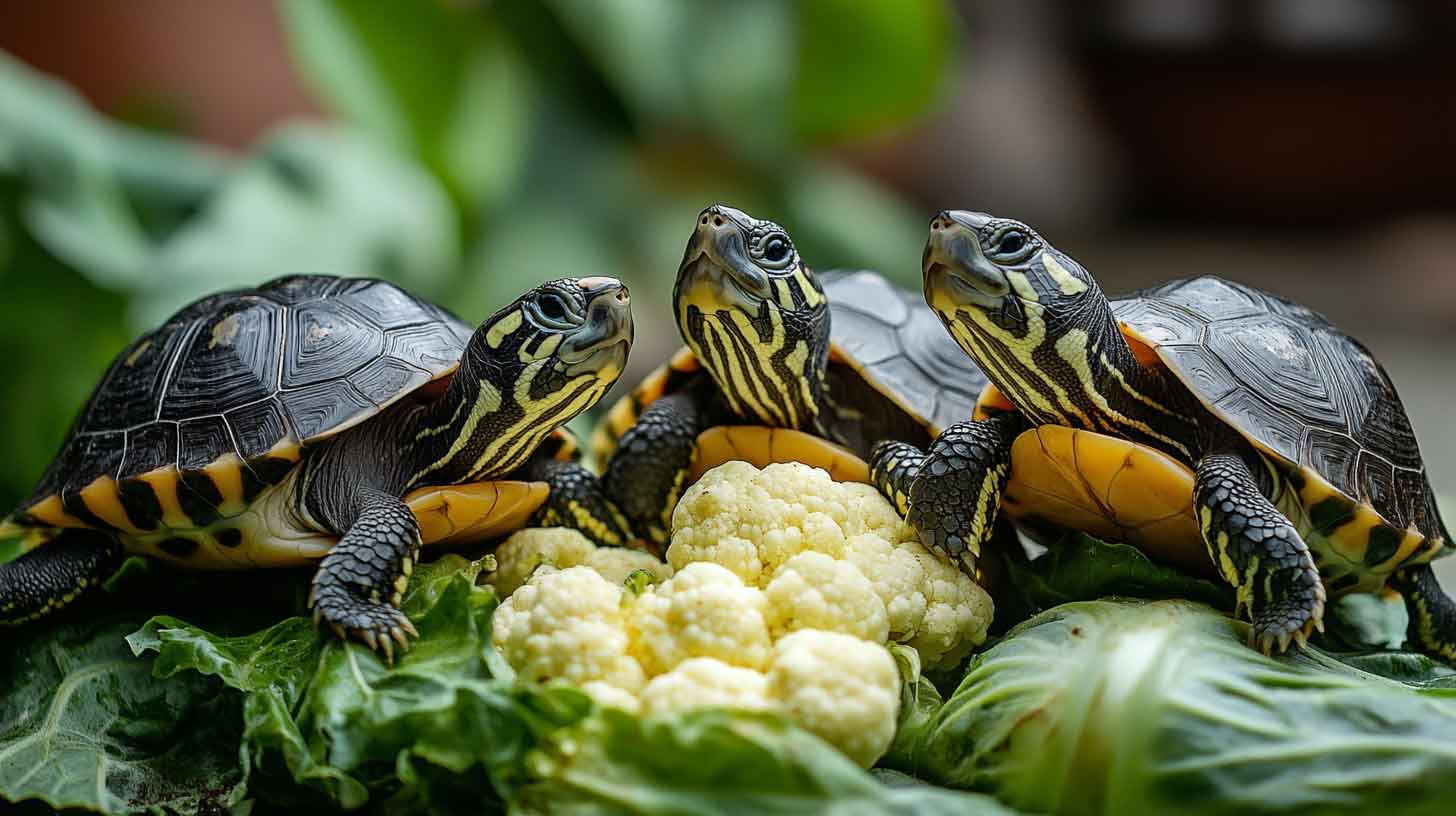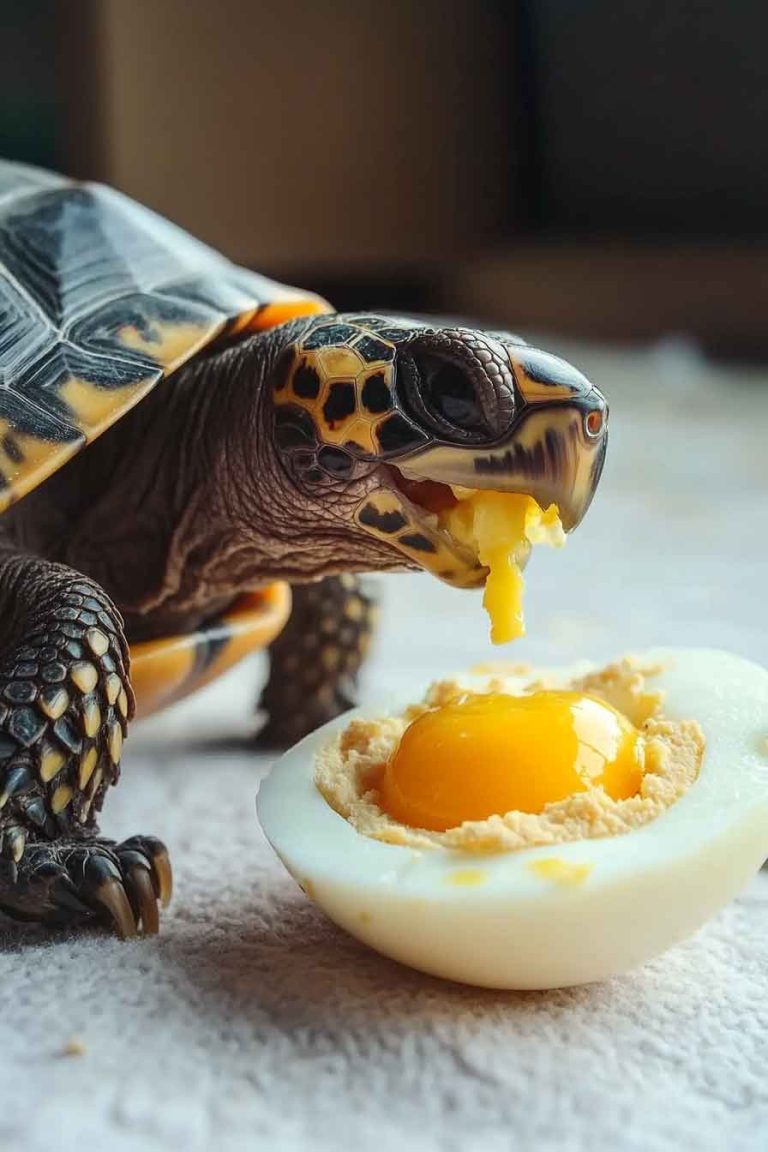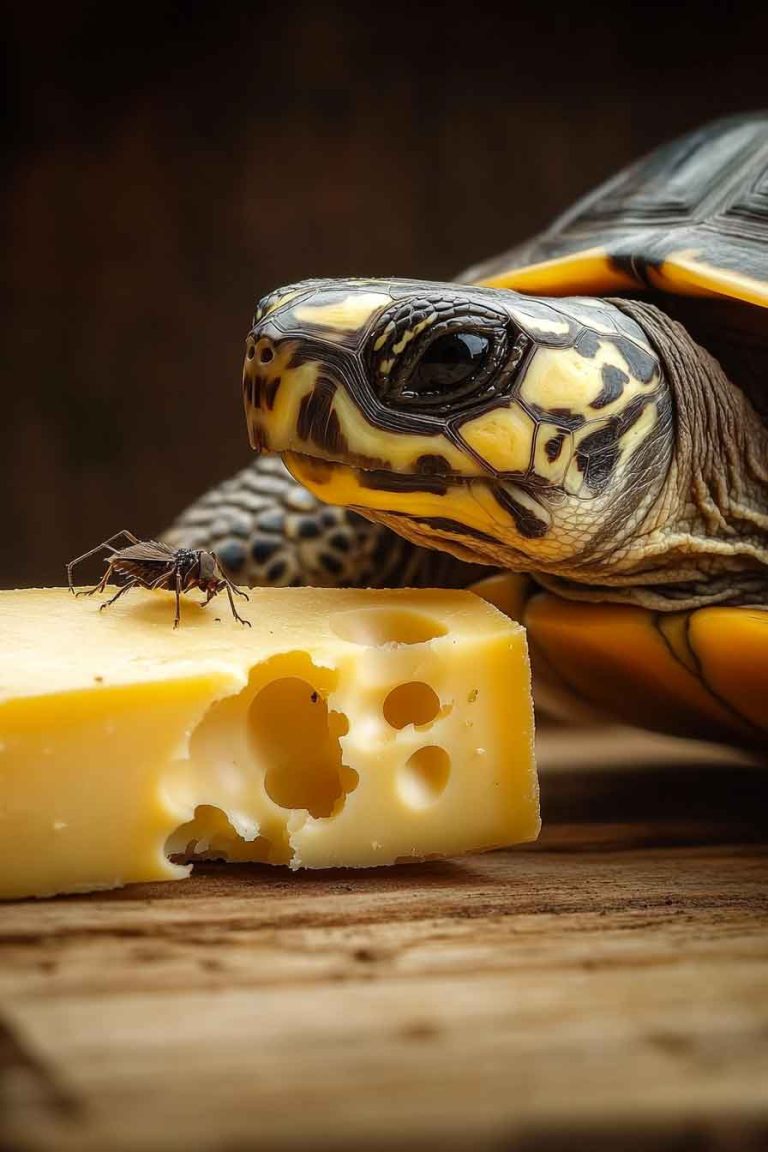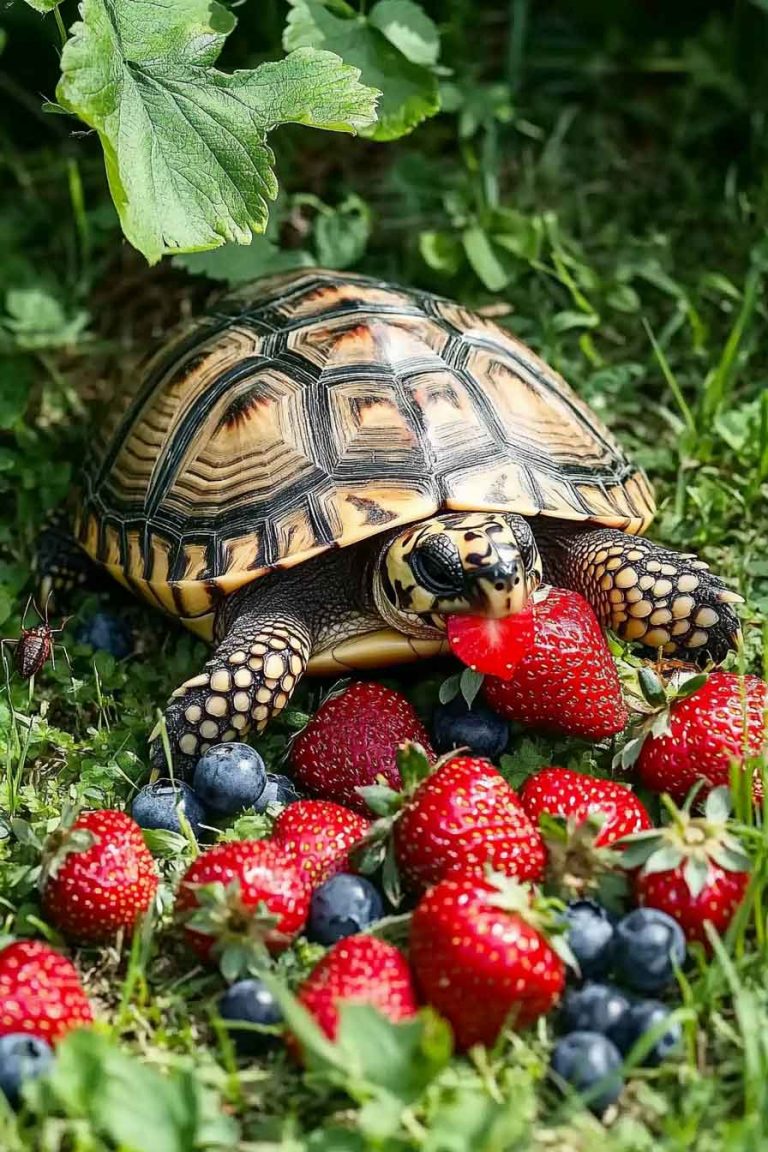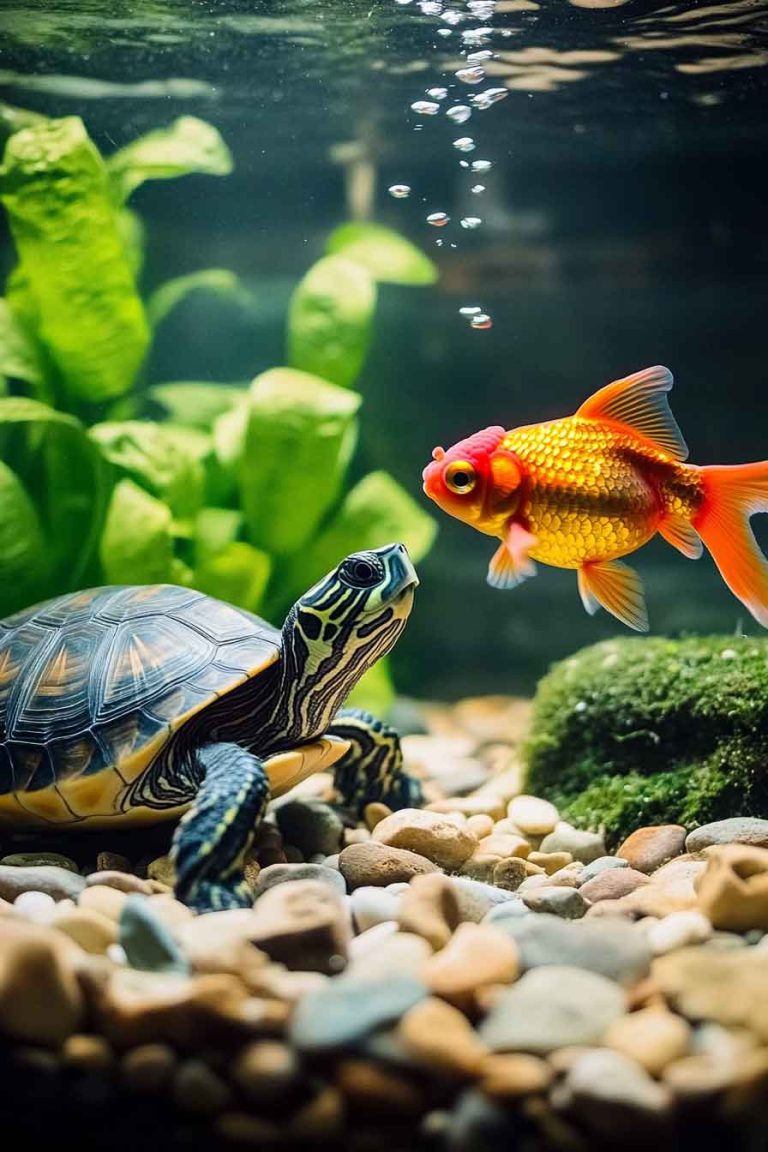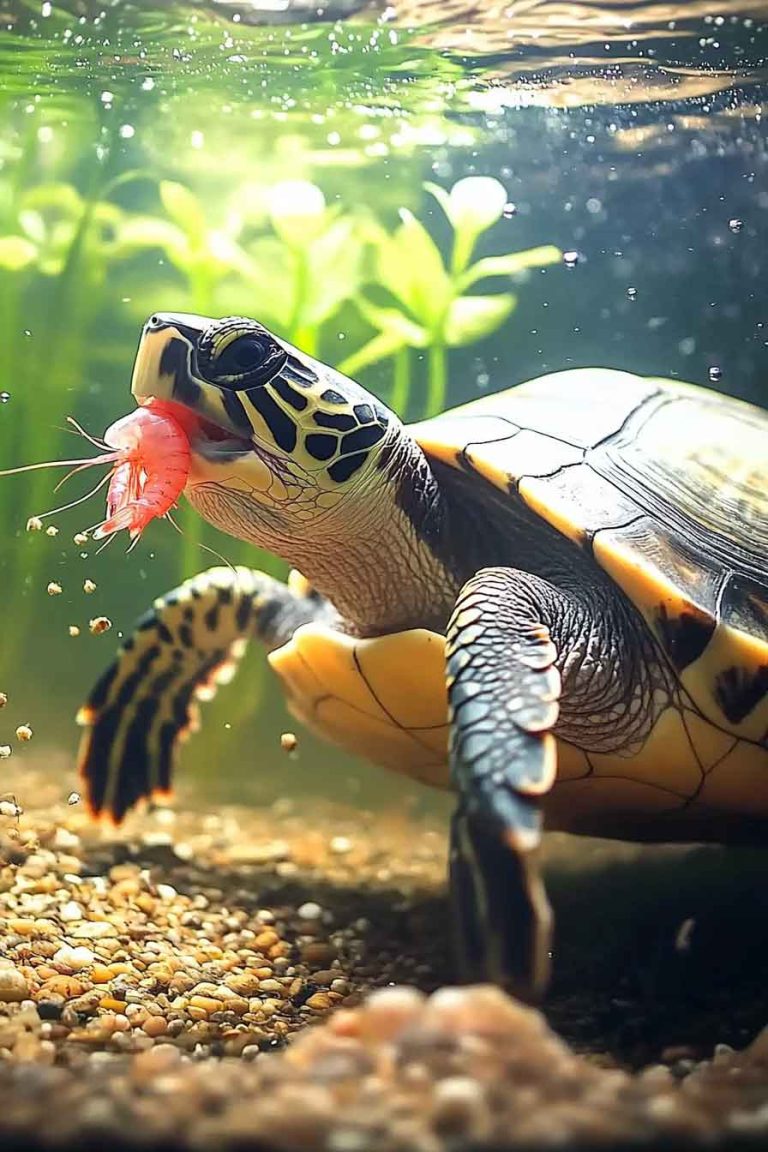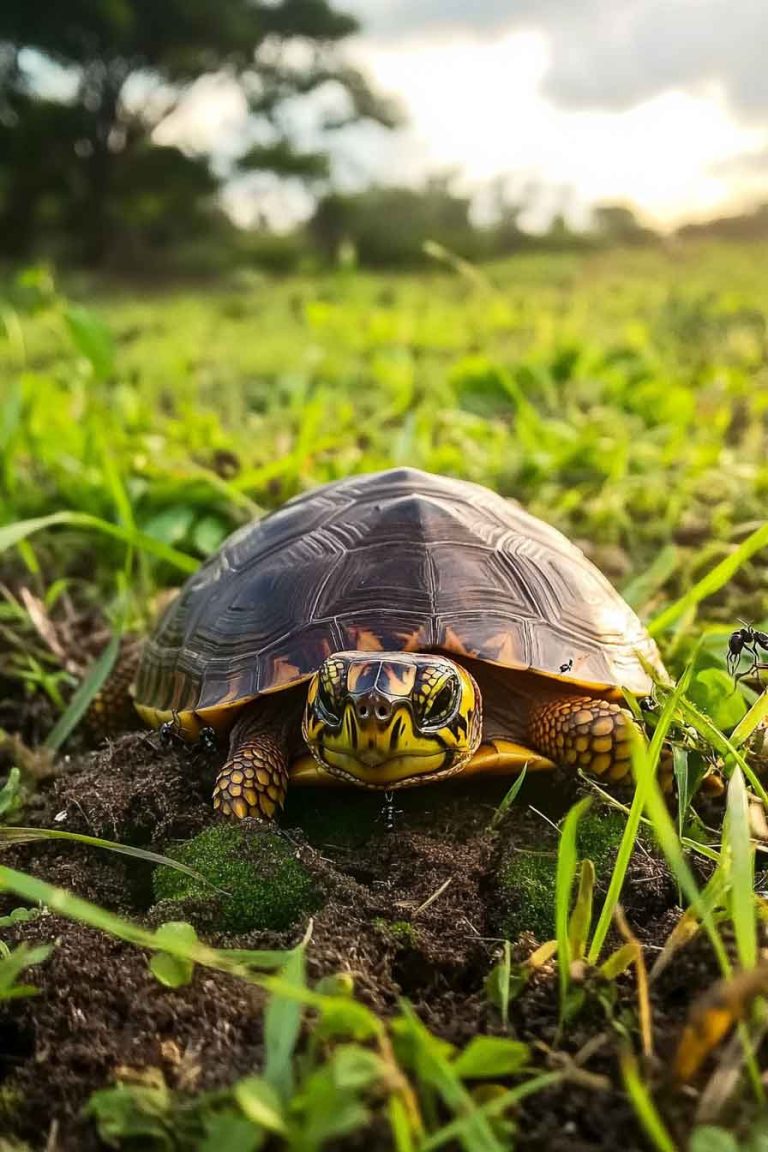Can Turtles Eat Cauliflower? (Is Cauliflower Good for Turtles)
If you have a pet turtle like me, I bet you’ve wanted to share your food with your little friend. I know I have! It’s so natural to want to give our pets the same yummy foods we eat. But when it comes to cauliflower, I had to do some research to make sure it…
If you have a pet turtle like me, I bet you’ve wanted to share your food with your little friend. I know I have! It’s so natural to want to give our pets the same yummy foods we eat. But when it comes to cauliflower, I had to do some research to make sure it was safe for my turtle.
So, can turtles eat cauliflower? Yes – turtles can eat cauliflower! Cauliflower is safe and healthy for turtles when given in the right amounts. This white vegetable has good nutrients that help turtles stay strong. Raw or cooked cauliflower can be a great treat for your turtle, but I’ll tell you exactly how to prepare it safely.
In this article, I’m going to share everything I learned about feeding cauliflower to turtles. I’ll tell you why it’s good for them, how much to give, and what to watch out for. Keep reading if you want to learn how to safely share this tasty vegetable with your turtle friend!
Can You Feed Cauliflower To Your Pet Turtle?
Yes, you absolutely can! Since cauliflower is a vegetable, many people think it’s automatically good for turtles – and in this case, they’re right! Cauliflower is one of the “safe vegetables” for turtles. You can add cauliflower to your pet turtle’s diet without worry.
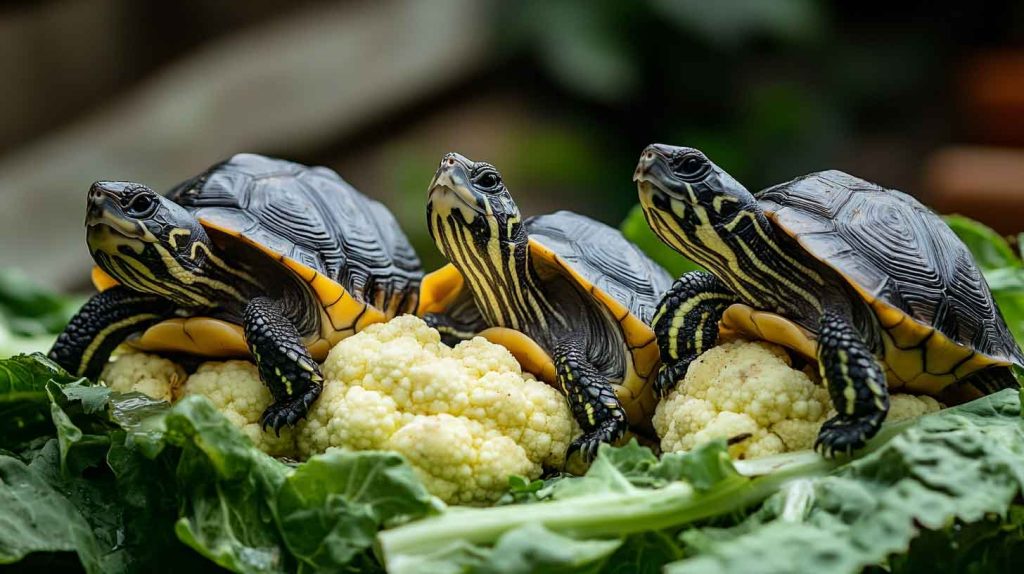
Turtles have sensitive stomachs, but cauliflower is gentle and easy for them to digest. Let me show you what’s inside 100 grams of cauliflower so you can see why it’s so good for turtles.
Carbohydrates: 4.97 g Sugar: 1.91 g Protein: 1.92 g Calcium: 22 mg Phosphorus: 44 mg Vitamin C: 48.2 mg Vitamin K: 15.5 mcg Folate: 57 mcg Potassium: 299 mg Magnesium: 15 mg Iron: 0.42 mg
This list shows us why cauliflower is a great choice for turtles! First, cauliflower is very low in sugar – only 1.91 grams per 100 grams. This is perfect because turtles can’t handle too much sugar.
The calcium to phosphorus ratio is important for turtles. While cauliflower has more phosphorus than calcium (which isn’t perfect), the amounts are small enough that it won’t hurt your turtle when given as an occasional treat.
Cauliflower also has lots of Vitamin C, which helps turtles stay healthy and fight off sickness. The low carbohydrate content means it won’t upset their stomach like some other vegetables might.
Do Turtles Like Cauliflower?
Most turtles do like cauliflower! In my experience, turtles enjoy the crunchy texture and mild taste. Some turtles prefer it raw because they like to bite and chew on hard foods. Other turtles like it better when it’s cooked soft.
Each turtle is different, just like people. My turtle loves small pieces of raw cauliflower, but my friend’s turtle won’t eat it unless it’s cooked first. You’ll need to try both ways to see what your turtle likes best.
Health Benefits of Cauliflower for Turtles
Cauliflower has many good things that help keep turtles healthy. Let me tell you about the main benefits I discovered:
Strong Immune System
Cauliflower has lots of Vitamin C – almost 50 mg per 100 grams! This vitamin helps turtles fight off germs and stay healthy. Just like how Vitamin C helps people not get sick, it does the same thing for turtles.
Good Digestion
The fiber in cauliflower helps turtles digest their food better. It’s gentle on their stomachs and helps everything move through their body the right way. This means fewer tummy problems for your turtle.
Healthy Shell Growth
Cauliflower contains calcium, which helps turtles grow strong shells and bones. While it’s not as much calcium as some other foods, every little bit helps keep your turtle’s shell hard and healthy.
Low Sugar Content
Unlike many vegetables, cauliflower is very low in sugar. This is perfect for turtles because too much sugar can make them sick. Cauliflower gives them nutrients without the bad effects of sugar.
Antioxidants
Cauliflower has special things called antioxidants that help protect turtle cells from damage. These help turtles live longer, healthier lives.
How Much Cauliflower Should Turtles Eat?
Even though cauliflower is safe for turtles, you shouldn’t give them too much. I learned that vegetables should only be about 10-15% of a turtle’s diet. The rest should be their regular turtle food, some protein, and other safe vegetables.
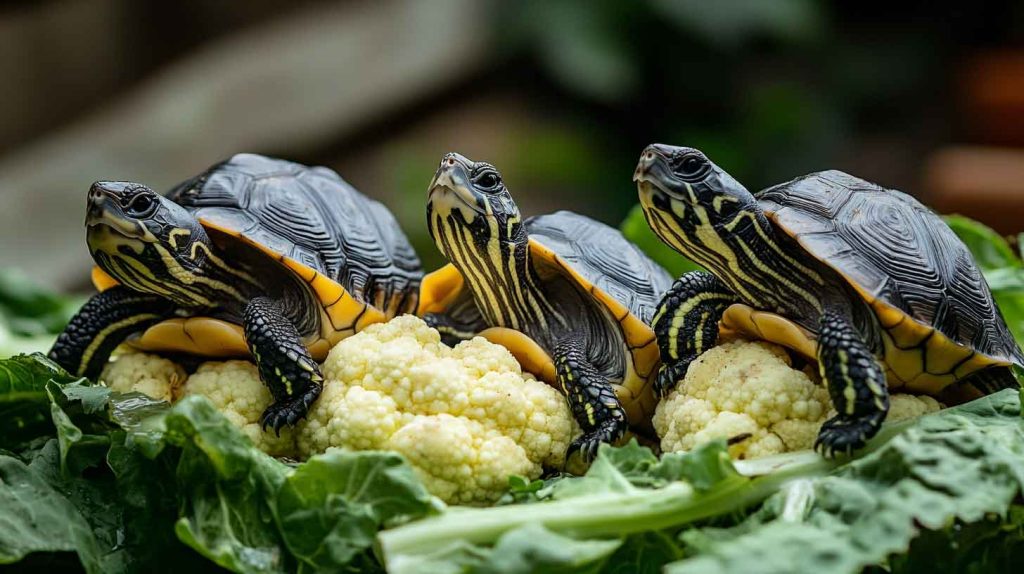
For a medium-sized turtle, I give about 2-3 small pieces of cauliflower once or twice a week. For smaller turtles, just 1-2 tiny pieces is enough. Big turtles can have a bit more – maybe 4-5 pieces.
Remember, cauliflower should be a treat, not a main food. Too much of any one vegetable isn’t good for turtles, even safe ones like cauliflower.
How to Prepare Cauliflower for Turtles
I’ve learned the best ways to prepare cauliflower for turtles. Here’s what works best:
Raw Cauliflower
- Wash the cauliflower really well
- Cut it into small pieces that fit in your turtle’s mouth
- Remove any leaves or green parts
- Only give the white florets
Cooked Cauliflower
- Steam or boil the cauliflower until it’s soft
- Don’t add any salt, butter, or spices
- Let it cool down completely before giving it to your turtle
- Cut into small pieces
Important Tips
- Never give your turtle cauliflower with seasonings
- Don’t use frozen cauliflower that has additives
- Always supervise your turtle when they’re eating
- Remove any leftover pieces after a few hours so they don’t spoil
Can You Feed Cauliflower to Baby Turtles?
Yes, you can feed cauliflower to baby turtles, but you need to be extra careful. Baby turtles have even smaller stomachs and more sensitive digestion than adult turtles.
For baby turtles, I recommend:
- Only giving tiny pieces
- Cooking the cauliflower until it’s very soft
- Only offering it once a week
- Watching them closely while they eat
Baby turtles need more protein in their diet than adult turtles, so vegetables like cauliflower should be an even smaller part of their meals.
What Turtle Species Can Eat Cauliflower?
Most turtle species can safely eat cauliflower. Here are the common pet turtles that can enjoy this vegetable:
Box Turtles
Box turtles love vegetables, and cauliflower is a great choice for them. They can eat both raw and cooked cauliflower. Since box turtles eat more vegetables than some other turtle types, they can have cauliflower a bit more often.
Red-Eared Slider Turtles
Red-eared sliders can definitely eat cauliflower. These water turtles do well with vegetables, and cauliflower provides good nutrition without upsetting their stomachs. I recommend giving it to them in their water so they can eat it naturally.
Painted Turtles
Painted turtles can safely eat cauliflower too. Like red-eared sliders, they’re semi-aquatic turtles that enjoy vegetables. Cauliflower makes a good occasional treat for painted turtles.
Russian Tortoises
Russian tortoises love vegetables, and cauliflower is perfect for them. They can handle raw cauliflower well because they’re used to eating tough plants in the wild.
Signs Your Turtle Likes Cauliflower
When I first gave my turtle cauliflower, I watched for signs that they enjoyed it. Here’s what to look for:
- Your turtle eats the cauliflower quickly
- They come to the front of their tank when they see you preparing it
- They don’t spit it out or ignore it
- No stomach upset or changes in their bathroom habits
- They seem excited at feeding time
Signs Your Turtle Doesn’t Like Cauliflower
Not every turtle will love cauliflower, and that’s okay! Here are signs your turtle might not enjoy it:
- They ignore the cauliflower pieces
- They spit it out after trying it
- They push it around but don’t eat it
- They seem less interested in eating overall
If your turtle doesn’t like cauliflower, don’t worry. There are lots of other safe vegetables they might prefer instead.
What to Do If Your Turtle Eats Too Much Cauliflower
Even safe foods can cause problems if turtles eat too much. If your turtle accidentally ate a lot of cauliflower, here’s what I recommend:
- Don’t panic – cauliflower isn’t dangerous
- Watch for any changes in behavior or appetite
- Make sure they have plenty of fresh water
- Go back to their regular diet for the next few days
- If they seem sick or stop eating, call a veterinarian
Most turtles will be fine even if they eat too much cauliflower, but it’s always better to be safe.
Other Safe Vegetables for Turtles
If you want to give your turtle variety, here are other safe vegetables they can enjoy:
- Leafy greens (collard greens, dandelion greens)
- Squash (yellow squash, butternut squash)
- Carrots (in small amounts)
- Green beans
- Bell peppers (red, yellow, green)
- Broccoli (occasionally)
Vegetables to Avoid
While cauliflower is safe, there are some vegetables you should never give to turtles:
- Onions (toxic to turtles)
- Garlic (can make them sick)
- Mushrooms (many types are poisonous)
- Avocado (toxic to most pets)
- Iceberg lettuce (no nutrition and can cause problems)
Frequently Asked Questions (FAQs)
Can turtles eat cauliflower leaves?
I don’t recommend giving turtles cauliflower leaves. Stick to the white floret parts, which are safest and most nutritious for turtles.
Is frozen cauliflower okay for turtles?
Plain frozen cauliflower is fine, but avoid any that have added seasonings or sauces. Fresh cauliflower is always the best choice.
How often can I give my turtle cauliflower?
I give my turtle cauliflower once or twice a week at most. It should be an occasional treat, not a daily food.
Can cauliflower make my turtle sick?
Cauliflower is very safe for turtles when given in proper amounts. The only problems would come from giving too much or giving it with harmful seasonings.
Do I need to cook cauliflower for my turtle?
No, you don’t have to cook it. Many turtles enjoy raw cauliflower. Cooking just makes it softer and easier to digest.
Conclusion
Cauliflower is a wonderful, safe vegetable that you can share with your turtle friend! Unlike some vegetables that can harm turtles, cauliflower provides good nutrition without dangerous side effects. The key is giving it in the right amounts – as an occasional treat, not a main food.
I hope this article helped you learn everything you need to know about feeding cauliflower to your turtle. Remember to always introduce new foods slowly and watch how your turtle responds. Every turtle is different, and what works for my turtle might be different for yours.
Your turtle will love having variety in their diet, and cauliflower is a great way to give them something special while keeping them healthy and happy!

